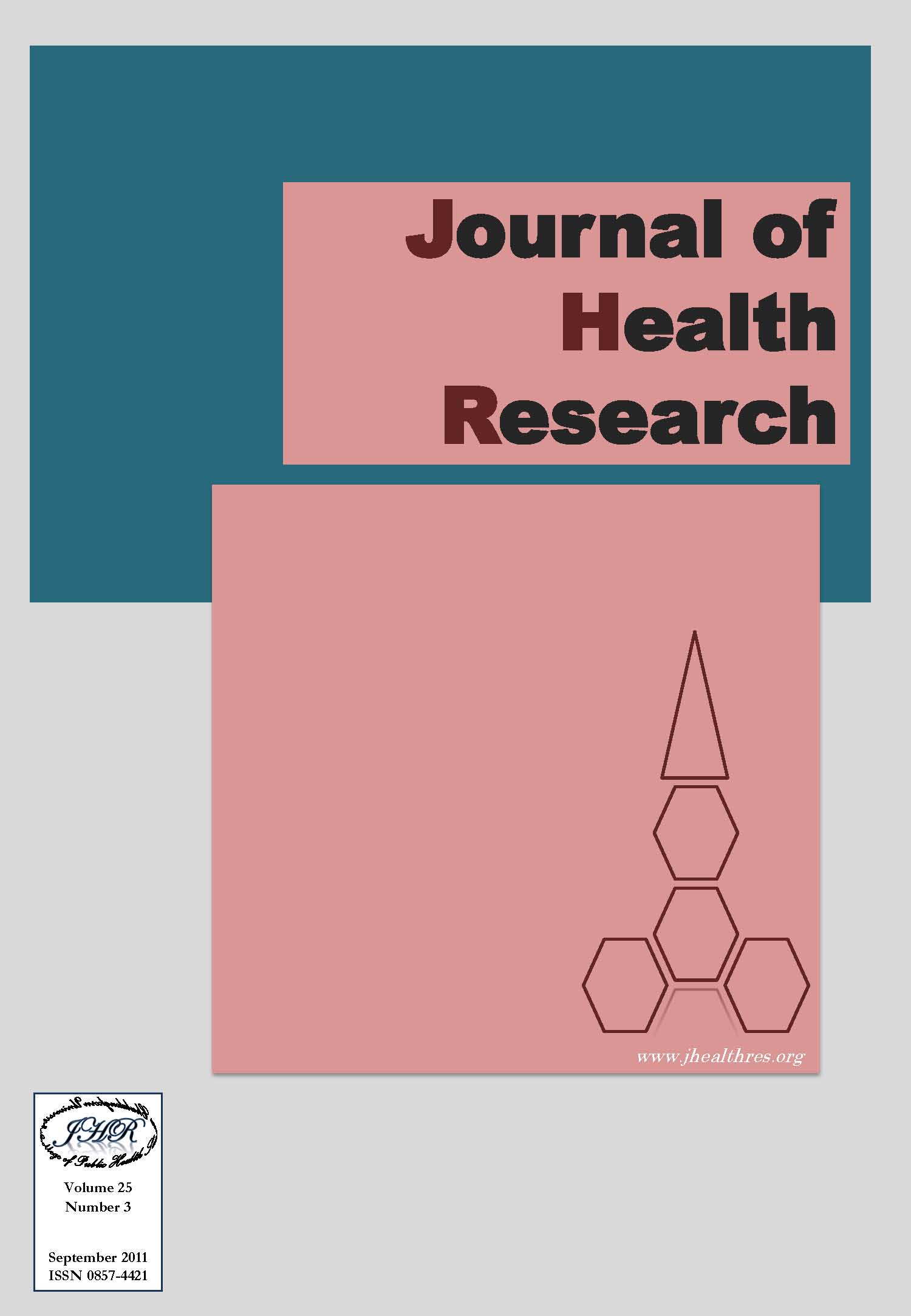Risk Assessment of Organophosphate Pesticides for Chili Consumption from Chili Farm Area, Ubon Ratchathani Province, Thailand
Keywords:
Organophosphate pesticide, Chili consumption, Consumption risk assessmentAbstract
A cross-sectional study of human health risk assessment related to chili consumption was done from October 2010 to February 2011 in Hua Rua agricultural community at Hua Rua sub-district, Muang district, Ubon Ratchathani province. Socio-demographic and dietary survey were completed by face-to-face questionnaire among 110 local people (45 males and 65 females). The result showed that the age of participants ranged from 15 to 79 years. The average weight (± S.D.) was 57 ± 10 kg. The average daily intake of chili was 0.018 kg/day which was higher than the average of general Thais (0.005 kg/day). For pesticide residues analysis, thirty-three chili samples were collected from farm after the day 7th of pesticides application. Chili samples were extracted using QuEChERS technique and quantified by gas chromatography equipped with flame photometric detector (FPD). Chlorpyrifos and profenofos (organophosphate pesticide) were commonly detected in the range of < 0.010-1.303 mg/kg and 0.520-6.290 mg/kg, respectively. For exposure assessment, an average daily dose (ADD) of chlorpyrifos and profenofos were 1.07 × 10-4 mg/kg-day and 8.00 × 10-4 mg/kg-day, respectively. A potential health risk characterization was indicated that risk characterization of chlorpyrifos did not exceed an acceptable risk ratio (hazard quotient; HQ < 1.0), but risk characterization of profenofos exceeded an acceptable risk ratio (HQ > 1.0). In conclusion, the local people in this area might be getting non-carcinogenic adverse health effects from profenofos residues in chili. This study suggested that an appropriated risk communication for pesticide residues reduction should be recommended for the Hua Rua community.







